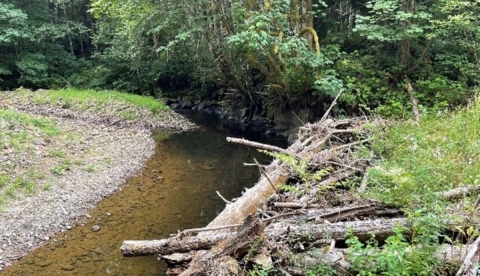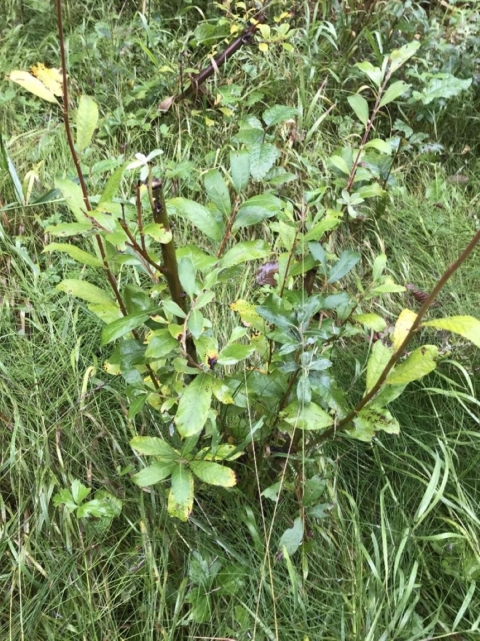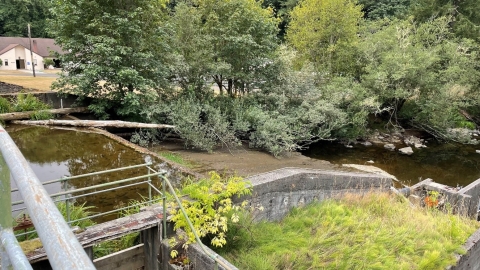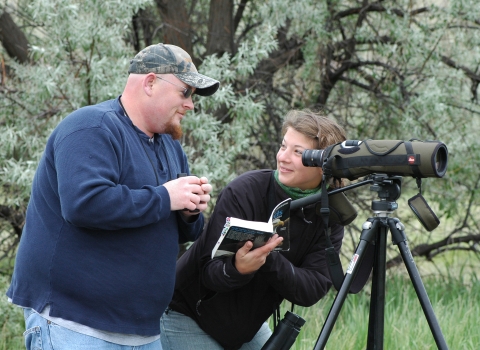Imagine that you are driving somewhere, and as you are cruising down on the road, you slow down because there was a long line of cars ahead of you. You see the orange flags and the warning signs- you’ve hit a construction delay. You are at a standstill and haven’t moved a single inch. Your first reaction could be disappointment, restlessness, or even agitation that you’re forced to wait. You’re left wondering why they can’t they do the construction on another day. As you get closer the construction site, you see that people are working in the creek and you wonder what’s so important about the creek if we humans aren’t really using it.
Well, it’s possible that the people in the creek are working on a fish passage fish passage
Fish passage is the ability of fish or other aquatic species to move freely throughout their life to find food, reproduce, and complete their natural migration cycles. Millions of barriers to fish passage across the country are fragmenting habitat and leading to species declines. The U.S. Fish and Wildlife Service's National Fish Passage Program is working to reconnect watersheds to benefit both wildlife and people.
Learn more about fish passage project.
Fish passage is migratory fish relying on the river and creek system to access spawning habitat, move between resting and foraging habitats, find cover from predators or cooler water conditions, out-migrate to the ocean. Barriers like dams, culverts, or levees aren’t designed for the consideration of migratory fish and environmental issues like excess sediment, poor water quality, changing temperature, and flow variation makes the lives of these fish difficult. These obstacles result in reduced fish abundance and diversity, scarce access to natural resources, and fish being cutting off from their historical birthplace. Amy Horstman, a USFWS Fish Passage Coordinator for Oregon and Habitat Restoration Biologist, said, “Fish passage is all about aquatic conductivity. Just like you wouldn’t go jogging when half of your arteries were clogged, you can’t have a functional stream system if you have instream blockages. There must be open connections between the tributaries and the main stem, from headwaters all the way down to estuaries, to have a good functional system.”
Read more: What is Fish Passage?
Horstman leads a fish passage project with Oregon Department of Fish and Wildlife (ODFW) on the North Fork Klaskanine River, a key tributary to Young’s Bay. It also happens to be one of the first major watersheds that ocean-returning fish like Coho, Fall and Spring Chinook, Winter Steelhead, Chum, Coastal Cutthroat Trout, and Pacific and Western Brook Lamprey encounter when returning from the ocean to the Lower Columbia River. The series of dams on the North Fork didn’t gain much attention for restoration. This led to a partnership between USFWS and ODFW to complete survey and passage assessment on the North Fork resulting in the removal of one of the hatchery dams (Dam #2) in 2020.
Barriers like dams don’t just cause harm to migratory aquatic species. Humans also benefit from proper and effective fish passage. “Recreation, fishing, drinking water, and hatcheries are among the many things that rely on these river systems,” said Horstman, “ineffective passage systems often cause hazards to the public, when talking about fish passage, you often have barrier culverts at road crossings. When you upgrade a barrier culvert to a bridge, it promotes public safety because these undersized culverts tend to clog sometimes causing flooding or they can completely blow out which can create a transportation safety hazard.” Negative effects can be mitigated through collaborative effort between local watershed councils, federal and state agencies, consultant firms, companies, and private landowners providing funding and permission for these types of projects.
Fish passage projects can impact the wellbeing of the wildlife, humans, and the environment surrounding it, federal policies are in place to safeguard health and safety. Brendan White, who works at the Oregon Fish and Wildlife Office and is the Conservation Partnerships Division Manager, listed some of the major federal policies that are implemented for these kinds of restoration projects. They include the Endangered Species Act, National Environmental Policy Act, National Historic Preservation Act, Clean Water Act- just to name a few. All are in place to protect vulnerable species and resources that can potentially be impacted by the restoration project.
More Images: North Fork klaskanine Dam #3: Fish passage restoration
Alongside working with Horstman is Leah Tai, a Hydrologist with USFWS who helps monitor and work on the technical aspects of fish passage restoration. She’s on site at Dam #3 where the project is constructing a roughened channel to provide water diversion for hatchery operations. She reviews the environmental impacts and makes sure the project meets its goals for both people and wildlife. “As a Hydrologist, I think about what the stream flows are, what stream flows do we expect in the area in different times of years, and how can we make sure that whatever we design here will be stable at both high and low flows so it won’t wash out, or erode, or cause issues at the hatchery with those different stream flows,” said Tai.
With Dam # 3 under fish passage restoration, there are plans of providing fish passage at Dam #1, the last major passage impediment in the system. Dam #1 blocks all native aquatic species movement. Pacific Lamprey which are unable to swim up the sharp edge of the dam drop off are left vulnerable to predation. As a result, minks take advantage of the trapped lamprey, a nutritious and easy source of food. With careful planning, partnerships like ODFW, USFWS, North Coast Watershed Association, Oregon Department of Transportation (ODOT), and Resources Legacy Fund made this restoration project possible for the continuing effort of creating better fish passage at this site.
Restoring better fish passage creates opportunities for fish to reproduce and gain access to new habitat. It also creates a better economic value and provides improved water quality. Partnerships like this show us how working together to restore stream connectivity can build lasting stream resilience and stronger local communities for both fish and people.







